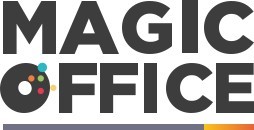
Understanding Portfolio Governance
Defining the Framework for Portfolio Governance
Portfolio governance is a critical aspect of strategic management within any organization. It involves a structured approach to decision making that ensures the alignment of projects with the strategic goals of the business. By establishing a governance framework, organizations can effectively manage their resources, risks, and overall portfolio performance.
At its core, portfolio governance is about creating processes that guide how decisions are made at the portfolio level. This involves setting up a governance team responsible for overseeing the portfolio management processes. The governance team plays a pivotal role in ensuring that each project aligns with the organization's strategic objectives, thereby optimizing the use of resources and minimizing risks.
Understanding the roles and responsibilities within the governance framework is essential. Each member of the governance team, from the portfolio manager to the project governance specialists, must be clear on their duties to ensure effective decision making. This clarity helps in managing the portfolio components efficiently, leading to improved portfolio performance.
For organizations looking to enhance their portfolio governance, integrating PMO templates can be a valuable strategy. These templates provide a structured approach to governance management, helping teams to streamline their processes and make informed decisions.
As we delve deeper into the key components and challenges of portfolio governance, it becomes evident that a well-defined governance framework is crucial for the success of any project portfolio. By understanding and implementing these foundational elements, organizations can better navigate the complexities of project management and achieve their strategic goals.
Key Components of Portfolio Governance
Fundamental Elements in Governance Frameworks
An effective governance framework is essential for sustaining success in any organization. It connects the intricate components that derive strategic objectives and put governance processes into motion. Portfolio governance is a multi-faceted approach that ensures all projects align with larger business goals, maximizing resource allocation and decision making at every step. Clarifying Roles and Responsibilities A vital component of portfolio governance is defining clear roles and responsibilities within the governance team. By establishing accountability, organizations can mitigate risks more effectively and support the decision making process. A dedicated governance team can steer the organization towards its strategic goals, ensuring each project aligns with broader business objectives. Alignment with Strategic Goals Projects must not exist in silos; rather, they should contribute to the overarching strategic goals of the organization. Strategic alignment ensures that each initiative supports portfolio performance targets and delivers value. By aligning projects with strategic objectives, decision makers can prioritize initiatives that advance the organization’s aims effectively. Resource Management Processes Efficient resource management is another critical aspect. Proper allocation and optimization of resources help mitigate risks associated with overspending or resource shortages. Implementing robust portfolio management processes enables the strategic distribution of resources across projects, enhancing the overall performance at the portfolio level. Continuous Performance Monitoring Regular portfolio performance assessments allow organizations to adjust their strategy proactively. Monitoring the execution of projects through a well-defined management plan helps identify opportunities for improvement and ensure the governance framework stays relevant in an ever-evolving business landscape. Such assessments also support risk management, enabling teams to respond swiftly to unforeseen challenges. Risk Management and Mitigation Risk management is integral to a successful governance project. Establishing risk governance protocols allows organizations to identify, assess, and mitigate risks effectively. A culture of proactive risk management not only safeguards project investments but also enhances decision-making resilience against potential threats. For organizations aiming to maximize their impact through strategic governance, considering these portfolio components is essential. By building a comprehensive governance framework that prioritizes alignment, accountability, and adaptability, businesses are well-positioned to achieve sustained success. Discover more about maximizing impact with governance: Maximizing Impact with Strategic Alignments.Challenges in Implementing Portfolio Governance in the UK
Overcoming Barriers to Effective Portfolio Governance
Implementing portfolio governance within an organization, especially in the UK, is not without its challenges. Many organizations encounter obstacles that can hinder effective decision making and impact overall portfolio performance. Understanding these challenges is crucial for developing effective governance frameworks and management plans tailored to the specific strategic objectives of the business. One significant challenge is the establishment of clear roles and responsibilities within the governance framework. Organizations often struggle with defining the governance project roles needed to ensure effective oversight of project portfolio management (PPM). Clearly identifying the roles and responsibilities of the governance team is essential to enhancing decision making at the portfolio level. Moreover, aligning the portfolio components with strategic goals can be difficult. Organizations might find it challenging to integrate the disparate elements of project management, such as resource allocation and risk management, with the broader strategic objectives. As a result, project decisions might not fully reflect the overarching business strategy. Process standardization for governance management is another barrier. Without standardized processes, governance teams may face difficulties in evaluating the performance of various projects across the organization, leading to inconsistencies and inefficiencies in decision making. Additionally, the integration of technology solutions to facilitate processes is sometimes overlooked. Organizations can face challenges in adopting the necessary IT support tools that aid in governance processes. Leveraging the right technologies is vital to streamline management processes, enhance risk assessment, and ensure that the governance framework is responsive to the changing needs of the organization. For organizations looking to address these challenges, solutions such as clarifying governance roles, aligning projects with strategic objectives, and adopting essential IT support tools for UK companies can make a significant difference in the effectiveness of their portfolio governance strategies. By integrating these solutions, organizations can improve their decision making and better manage risks.Strategies for Successful Portfolio Governance
Adopting Best Practices for Portfolio Governance
In any organization, focusing on strategic goals while managing various projects and resources can be challenging. Effective portfolio governance not only enhances decision making but also aligns projects with strategic objectives to optimize performance. Here are some strategies that organizations can implement to ensure successful portfolio governance:- Define Clear Roles and Responsibilities: Establishing a governance framework starts with defining roles and responsibilities. This involves identifying a governance team, including portfolio managers and a project management team, who play crucial roles in overseeing governance processes and decision making.
- Align Projects with Strategic Objectives: All projects within the portfolio should be in line with the organization’s strategic objectives. This ensures that resources are allocated efficiently, and the potential risks are minimized across the portfolio level. Regular assessments can help in evaluating alignment and portfolio performance.
- Implement Standardized Governance Frameworks: Utilizing a standardized governance framework can streamline project governance and enhance portfolio performance. This involves establishing consistent processes for risk management, resource allocation, and performance monitoring across projects.
- Foster a Culture of Communication: Open communication channels between governance teams and project teams are essential for effective portfolio management. This allows for timely feedback, risk management, and adjustments to projects, aiding in better decision making.
- Regular Monitoring and Evaluation: Continuous monitoring and evaluation of the project portfolio governance processes are key to ensuring ongoing alignment with business objectives. This helps in identifying gaps and areas for improvement, promoting a proactive approach to governance management.


-large-teaser.webp)










